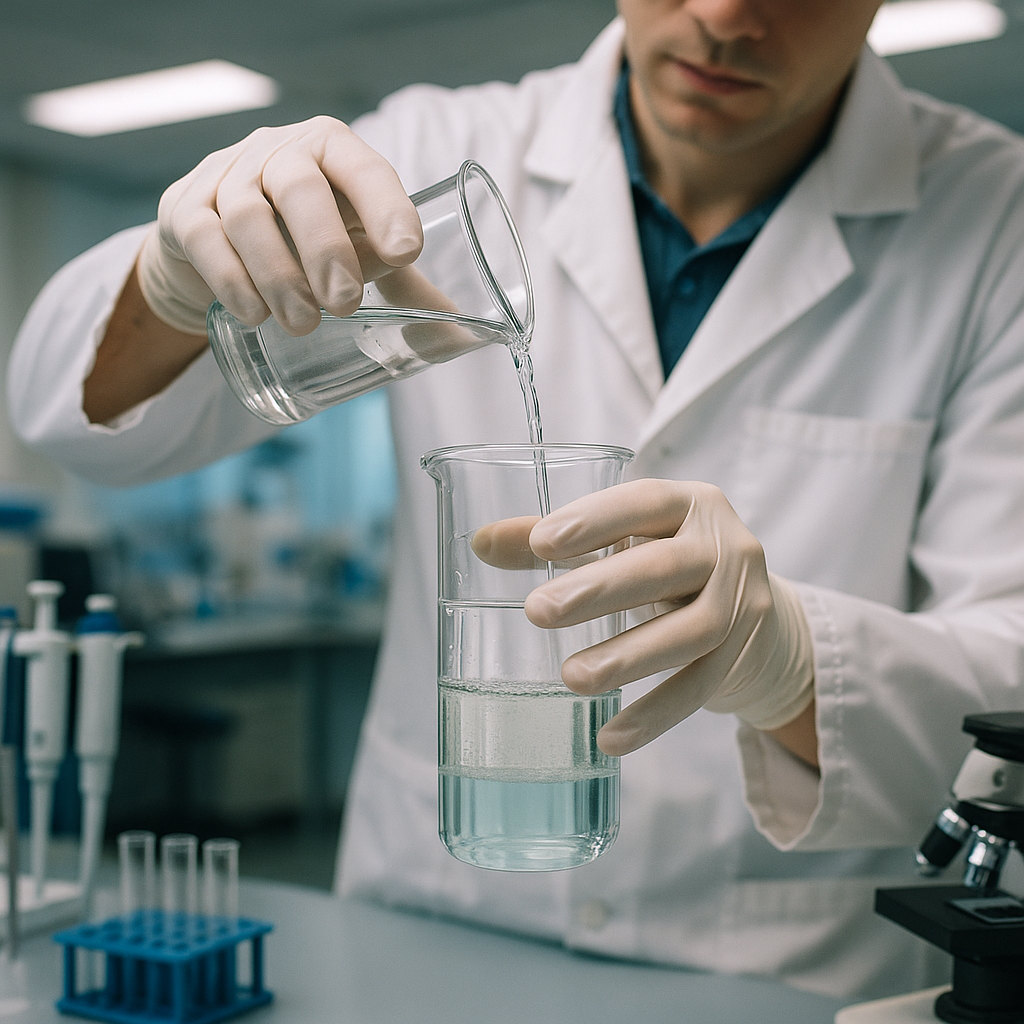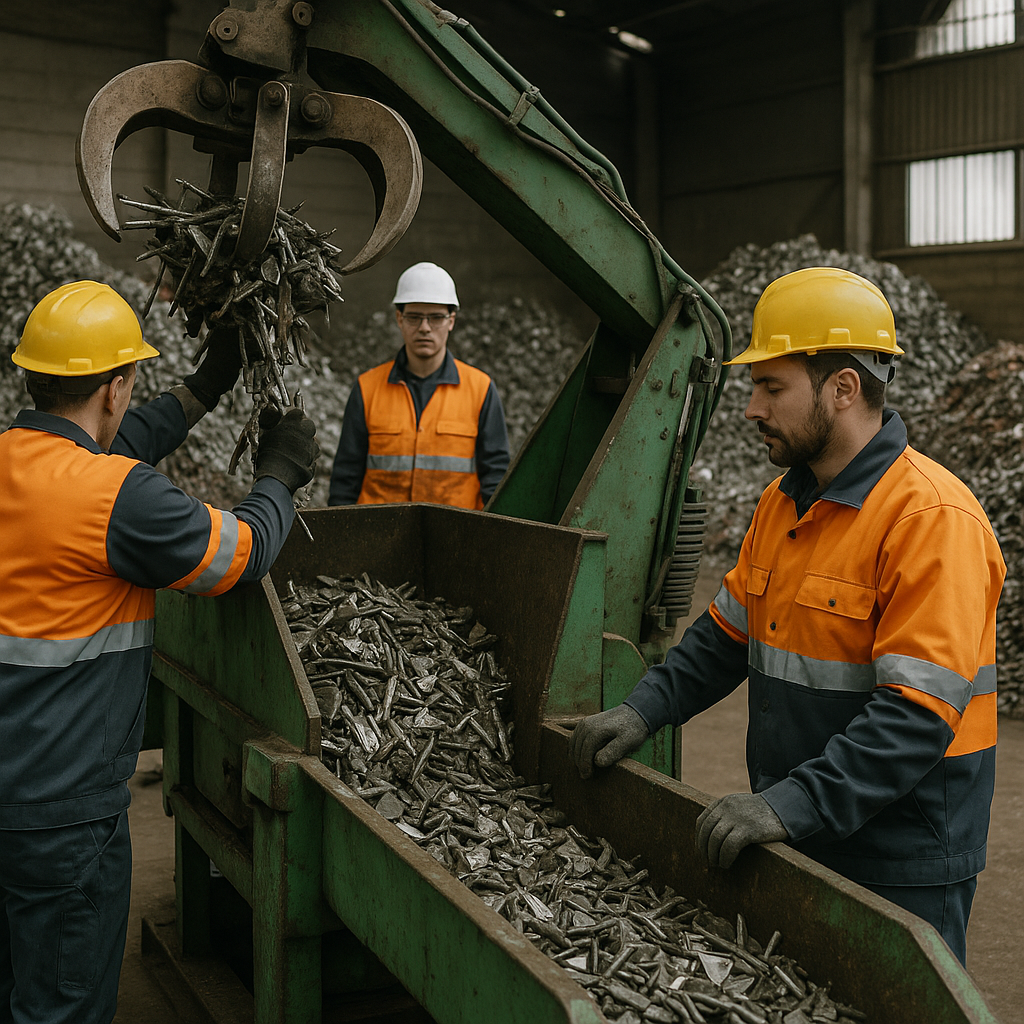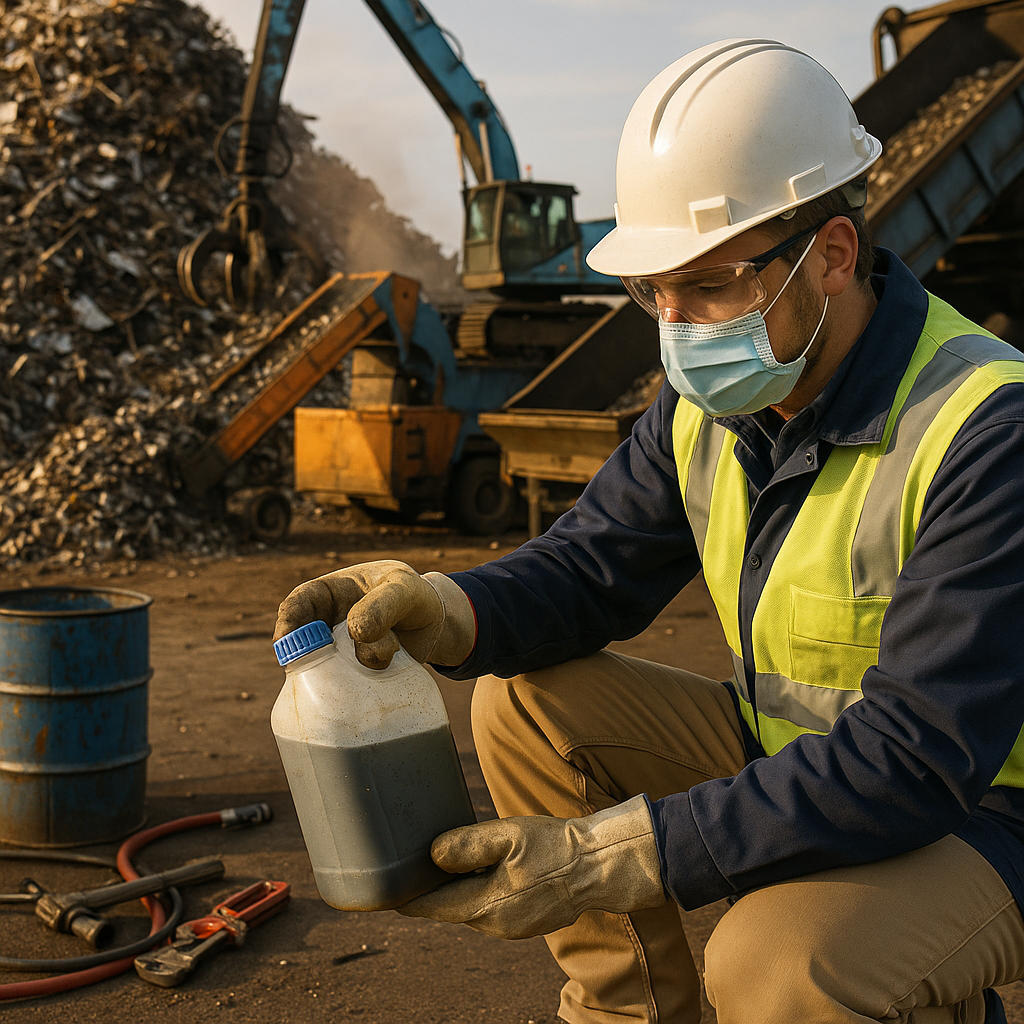5901 Botham Jean Blvd, Dallas, TX 75215
Solvent Extraction in Metal Recycling: Process, Applications, and Sustainable Benefits
October 4, 2025As we search for more sustainable ways to manage our planet’s limited resources, solvent extraction has become essential in modern metal recycling. This chemical separation process enables recyclers to recover valuable metals from complex mixtures that are challenging to process through conventional methods.
Solvent extraction functions by transferring metal ions from an aqueous (water-based) solution to an organic solvent phase. The technique’s strength is its selectivity—allowing for the extraction of specific metals while leaving unwanted materials behind. This precision is particularly valuable for recycling high-value metals from increasingly complex waste streams.
The process relies on a straightforward yet effective chemical principle. When two immiscible liquids (like oil and water) come into contact, certain metal compounds will preferentially dissolve in one phase over the other. By carefully selecting the appropriate organic solvent and controlling conditions such as acidity and temperature, recyclers can encourage specific metals to move from the water-based solution into the organic phase, effectively separating them from other elements.
How Does the Solvent Extraction Process Work?

Solvent extraction is a sophisticated method used for recycling and recovering valuable metals. This hydrometallurgical process separates and concentrates specific metals from complex mixtures based on their solubility. Here’s how this essential metal purification process works.
The Leaching Stage
The process begins with leaching, where metals are dissolved from solids into an aqueous solution. This typically involves treating metal-containing materials with a strong acid, such as hydrochloric acid for platinum-group metals. The acid dissolves the target metals, creating a metal-rich aqueous solution that serves as the foundation for extraction.
The Extraction Phase
Once we have our metal-containing solution, it’s mixed with an organic solvent containing specialized extractants designed to selectively bind with specific metal ions. When the aqueous solution and organic solvent are thoroughly mixed, target metal ions transfer into the organic phase.
This occurs because the extractant molecules form strong chemical bonds with the desired metals, creating organic-metal complexes soluble in the organic phase but not in water. Meanwhile, impurities and unwanted metals remain in the aqueous solution, enabling effective separation.
Phase Separation
After mixing, the solution settles into two distinct layers—the metal-loaded organic phase on top and the depleted aqueous phase (raffinate) below. The clear separation of these immiscible liquids is crucial for the process. The organic phase, now containing the target metals, is moved to the next stage.
The Stripping Stage
In the stripping phase, the metal-loaded organic solvent is mixed with a new aqueous solution designed to reverse the extraction reaction. This solution typically has different chemical properties (such as pH level) than the original leaching solution. Under these conditions, the metal ions transfer back into this fresh aqueous phase in a more concentrated and purified form.
Metal Recovery
From the strip liquor (the aqueous solution with concentrated metals), the purified metals can be recovered via methods such as precipitation, electrowinning, or crystallization. The final product is either the pure metal or a high-purity metal compound for further processing.
Solvent Regeneration
After stripping, the organic solvent is typically regenerated to remove any remaining metals or degradation products. This regenerated solvent can be reused in the extraction stage, making the process economical and environmentally friendly.
Optimizing the Process
The efficiency of solvent extraction depends on several factors that can be adjusted to target specific metals:
- Selecting appropriate extractants that bind selectively to desired metals
- Controlling pH levels to enhance selectivity
- Adjusting phase ratios between organic and aqueous solutions
- Managing temperature and agitation to improve kinetics
- Using multiple extraction stages to increase yield and purity
For complex metal mixtures, such as those in electronic waste or spent catalysts, extraction conditions are optimized to achieve selective recovery of valuable metals like platinum, palladium, copper, or rare earth elements.
This hydrometallurgical approach offers significant advantages over traditional pyrometallurgical (high-temperature) processes, including lower energy consumption, reduced environmental impact, and the ability to process complex, low-concentration materials effectively, making it an ideal technology for modern metal recycling operations.
What Are the Key Applications in Metal Recycling?

Solvent extraction is a foundational technology in modern metal recycling, offering selective recovery of valuable metals from complex waste streams. This technique is particularly effective for processing materials with low concentrations of high-value metals that would otherwise be uneconomical to recover.
In the automotive sector, solvent extraction is crucial for recovering platinum group metals (PGMs) from spent catalytic converters. These converters contain platinum, palladium, and rhodium—metals with market values reaching thousands of dollars per ounce. The process usually involves leaching metals into solution using acids, followed by selective extraction with reagents like tributyl phosphate or trioctylamine. This method recovers over 95% of these precious metals, significantly reducing the need for environmentally damaging mining operations.
Electronic waste represents another major application area. With rare earth elements such as neodymium, dysprosium, and praseodymium essential for everything from smartphone speakers to electric vehicle motors, solvent extraction provides an efficient recovery pathway. The technique can separate these chemically similar elements with high purity—a task nearly impossible with conventional mechanical separation. Recent innovations using hydrophobic deep eutectic solvents have improved the environmental profile of this process while maintaining extraction efficiencies above 90%.
Base metal recycling also relies heavily on solvent extraction. Copper recovery from circuit boards often employs reagents like LIX 84I, which can selectively extract copper with nearly 100% efficiency even in the presence of other metals. Similarly, zinc and nickel can be separated from industrial byproducts using phosphoric acid derivatives, creating high-purity metal streams suitable for immediate reuse in manufacturing.
The economic and environmental benefits of these applications are substantial. Recycling one ton of catalytic converters through solvent extraction can yield the same amount of platinum as processing over 150 tons of ore, while consuming 85% less energy and producing 90% fewer carbon emissions. For rare earth elements, recycling reduces the need for mining operations that generate radioactive waste and consume massive amounts of water.
Furthermore, these recycling pathways strengthen supply chain resilience for critical materials. With over 80% of rare earth production currently concentrated in China, developing domestic recycling capabilities using solvent extraction provides countries with greater resource security for technologies essential to renewable energy and defense applications.
As regulations on waste disposal become more stringent worldwide, solvent extraction technologies continue to evolve, with researchers developing greener solvents and more efficient processes to handle the growing complexity of metal-containing waste streams. These innovations promise to further enhance the economic viability and environmental benefits of metal recycling across various industries.
What Are the Benefits and Challenges of Solvent Extraction?
Key Benefits of Solvent Extraction
Solvent extraction provides exceptional selectivity in metal recovery operations. This process allows for precise separation of target metals from complex mixtures with remarkable accuracy, making it valuable for recovering specific metals from mixed waste streams.
Another significant advantage is the efficiency of solvent extraction processes. When properly optimized, these systems can achieve high recovery rates even from low-concentration sources, transforming uneconomical materials into viable resources for metal recovery.
Solvent extraction excels at processing low-grade sources that other technologies might struggle with. It can extract metals from dilute solutions, mine tailings, and industrial waste streams. This versatility extends the range of viable feedstocks and supports comprehensive resource recovery.
Adaptability and Customization
One of the most valuable features of solvent extraction is its adaptability. The process can be tailored to specific metal combinations through careful selection of solvents and operating parameters. Recycling facilities can customize systems based on their input materials.
The technique also enables the recovery of high-purity metals. Through multi-stage processes, solvent extraction can produce metals with purity levels that meet stringent industrial specifications, crucial for applications in electronics, aerospace, and other advanced industries.
Additionally, solvent extraction systems can be scaled according to operational needs. The technology works effectively in both small batch processes and continuous industrial-scale operations, making it suitable for various facility sizes.
Challenges in Solvent Extraction
Process optimization is a significant challenge in solvent extraction. Many variables, including pH, temperature, solvent concentration, and contact time, affect extraction performance. Finding the optimal combination requires extensive testing and expertise.
Environmental concerns present another major challenge. Traditional organic solvents can pose health and safety risks through emissions and potential spills. The toxicity and environmental persistence of some conventional solvents raise serious sustainability concerns.
The complexity of treating multi-metal solutions also creates difficulties. When multiple metals compete for extraction, separation becomes more challenging. Interactions between different metals can reduce efficiency and complicate the recovery process.
Advancing Sustainable Solutions
Research into green solvents is addressing many environmental challenges of solvent extraction. Scientists are developing bio-based solvents, ionic liquids, and deep eutectic solvents as eco-friendly alternatives offering lower toxicity, reduced volatility, and better biodegradability compared to traditional solvents.
Technological innovations are improving extraction efficiency through advanced equipment design and process intensification. Microfluidic devices and continuous flow systems provide enhanced control over parameters, reducing solvent consumption while improving metal recovery rates.
Integration with other recycling technologies creates synergistic systems that overcome individual process limitations. Combining solvent extraction with membrane separation or electrochemical recovery can enhance overall efficiency, representing the future of advanced metal recycling systems.
Conclusion: The Future of Solvent Extraction in Metal Recycling

Solvent extraction has become a transformative technology in sustainable metal recycling. This technique enables the selective recovery of valuable metals from complex waste streams that traditional methods struggle to process efficiently. By allowing precise separation of specific metals even in low concentrations, solvent extraction is essential in our transition toward a more circular economy.
As global demand for critical metals rises and primary resources grow scarce, the importance of efficient recycling methods is paramount. The versatility of solvent extraction—especially when combined with technologies like electrowinning and bioleaching—provides a promising pathway to meet these challenges. Recent advances in green chemistry are already enhancing this technique’s environmental performance, with innovations such as biodegradable extractants, ionic liquids, and deep eutectic solvents offering more sustainable alternatives to conventional reagents.
In the future, we can expect innovations to focus on process intensification, reduced energy consumption, and developing even more selective ligands tailored to specific metals. As research continues to refine these techniques, solvent extraction will likely play a vital role in urban mining operations, transforming today’s electronic waste and end-of-life products into tomorrow’s resources. For organizations looking to implement responsible metal recycling practices or enhance their resource recovery operations, contact Okon Recycling at 214-717-4083.
